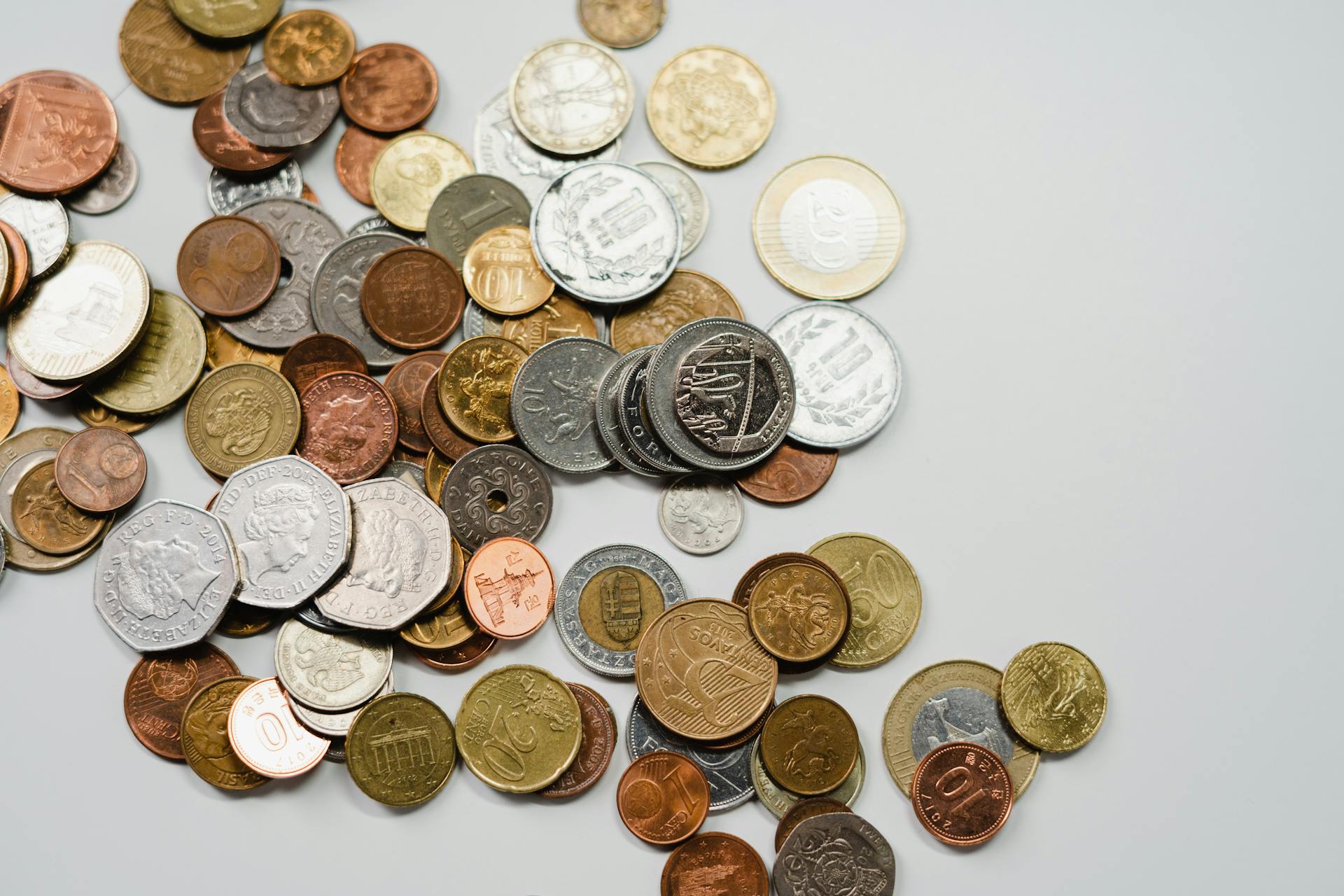
The Coinage Act of 1873 marked a significant turning point in US history, shifting the country's monetary system and paving the way for the gold standard.
The act eliminated the production of silver coins, a move that had far-reaching consequences for the economy and the nation's finances.
Prior to the Coinage Act, the US had a bimetallic standard, where both gold and silver were used as currency. The act effectively abandoned this standard, making gold the sole backing for US currency.
This change had a profound impact on the nation's economy, leading to a significant decline in the value of silver and a shift in the country's monetary policy.
Additional reading: Digital Gold Currency
History of the Coinage Act
The Coinage Act of 1873 was a significant piece of legislation that changed the way the United States minted its coins.
The Act was passed on February 12, 1873, and it effectively demonetized silver, allowing the gold standard to become the dominant monetary system.
The Act was part of a larger effort to reorganize the US economy and currency system after the Civil War.
Prior to the Act, the US had a bimetallic standard, where both gold and silver were accepted as legal tender.
The Coinage Act of 1873 was sponsored by Senator John Sherman and Representative Hooper.
The Act also established the Mint as a separate bureau within the Department of the Treasury.
The Coinage Act of 1873 was a major turning point in the history of US currency and commerce.
For your interest: Crypto Currency Trial
Legislative Process
The legislative process for the Coinage Act of 1873 was a long and contentious one. It took nearly three entire years for Congress to pass the law.
The intense debate surrounding the bill crossed over multiple party lines, with many Senators fearing the implications of ending bimetallism.
Purpose and Intent of Legislation
The purpose and intent of legislation is a crucial aspect of the legislative process. The Coinage Act aimed to standardize the currency of the United States.
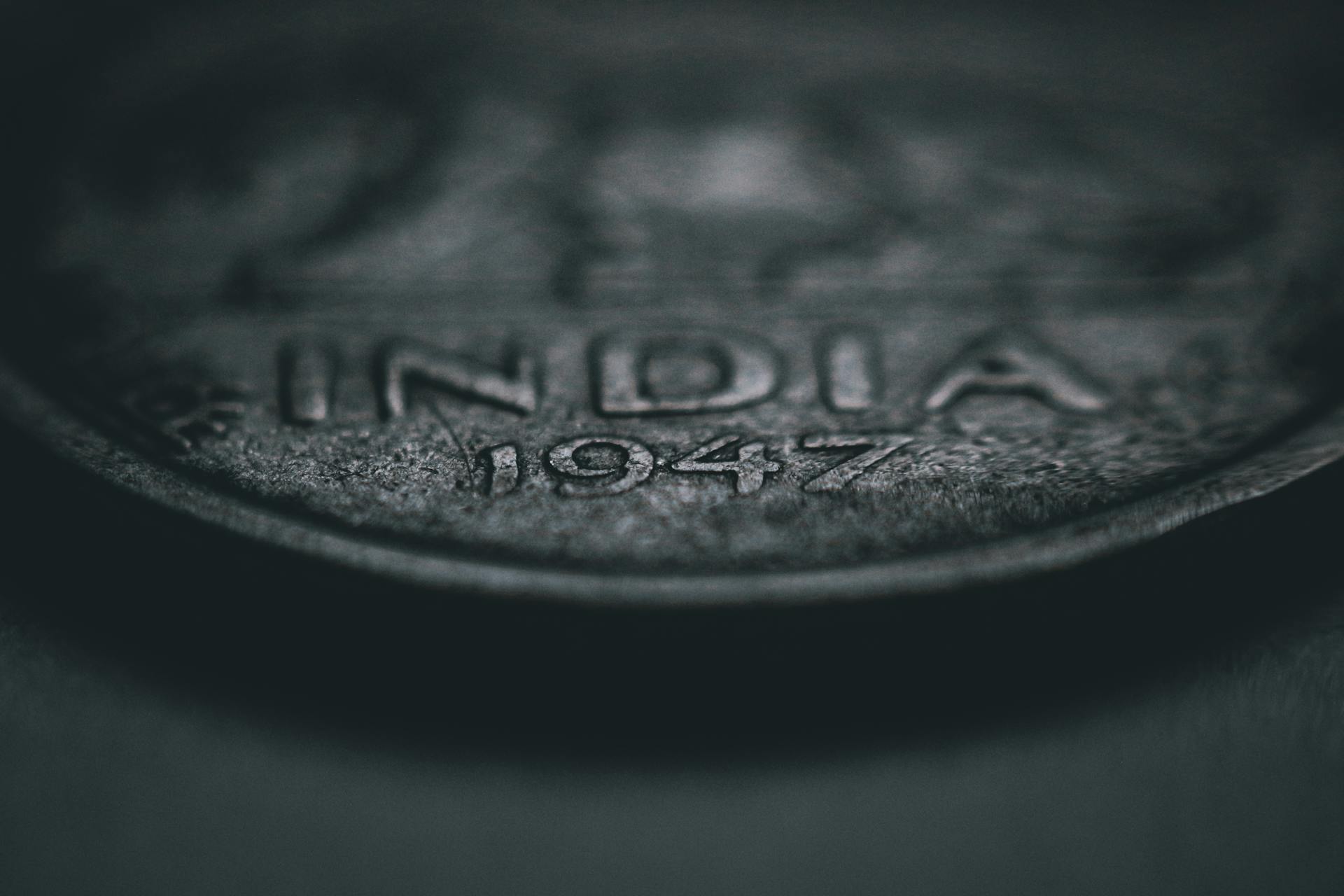
By establishing a uniform currency, the government hoped to facilitate trade between states and territories, creating a more stable economy and promoting growth and development. This was a key goal of the legislation.
The Act also established the dollar as the official currency of the United States and defined the weight and purity of coins that would be minted, ensuring all coins would be of the same quality and value. This ensured a more reliable currency for citizens and investors.
The Coinage Act was seen as a means of promoting commerce within the country, which would help to create a more stable economy and promote growth and development. The government wanted to attract investment into the country, which would fuel economic growth.
The Act established a silver standard, providing a stable and reliable currency that would be accepted by investors both domestically and internationally. This helped to attract investment into the United States.
One of the primary goals of the Coinage Act was to ensure the stability of the country's currency. The government wanted to create a more stable monetary system that would be less susceptible to fluctuations in the market.
Broaden your view: Anchor Coinage
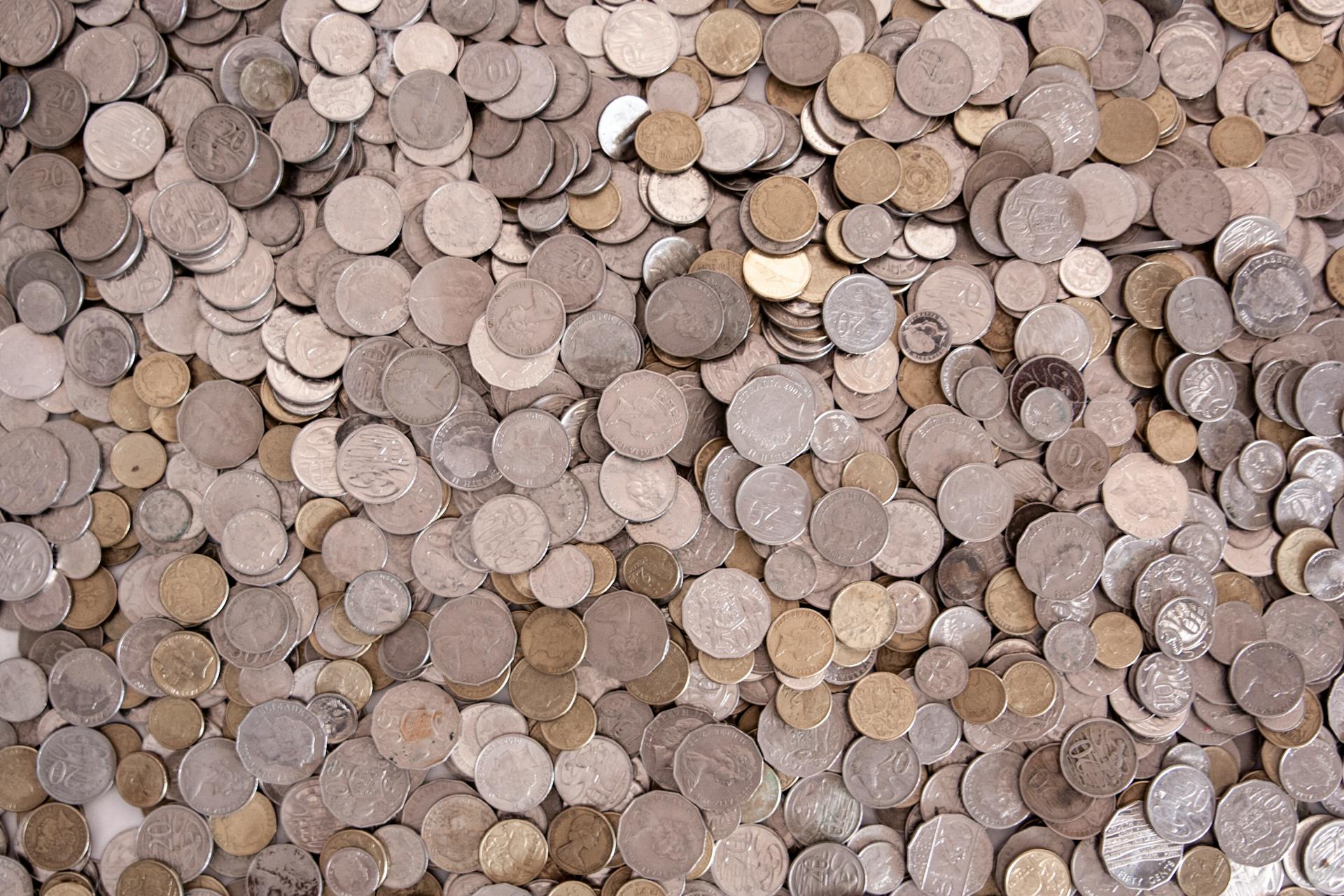
The Act also included provisions for protecting against counterfeiting, which was an important issue at the time. Counterfeit currency could undermine the stability of the country's monetary system.
The Coinage Act was a highly controversial piece of legislation, with supporters and opponents on both sides of the political aisle. Many Democrats and farmers opposed the act, as they believed it favored the interests of big business and wealthy elites over the needs of average Americans.
The Act remains an important piece of legislation to this day and serves as a reminder of the importance of a stable and reliable monetary system.
You might enjoy: Depository Institutions Deregulation and Monetary Control Act
Intense Senate Debates
The intense Senate debates surrounding the Crime of 1873 were a defining moment in legislative history.
The law was a long time coming, taking nearly three entire years to pass Congress. Intense debate crossed over multiple party lines, with many Senators fearing the implications of ending bimetallism.
The policy of having currency backed by not one, but two, separate precious metals was a contentious issue. Historians note that the controversy surrounding the Crime of 1873 started long before President Ulysses S. Grant signed the bill into law.
Newspapers, public speakers, and political leaders scrambled to take sides once the bill was signed into law and made public. It became a national issue, with many people weighing in on the debate.
On a similar theme: How Long Does the Act Take?
Coinage and Bullion
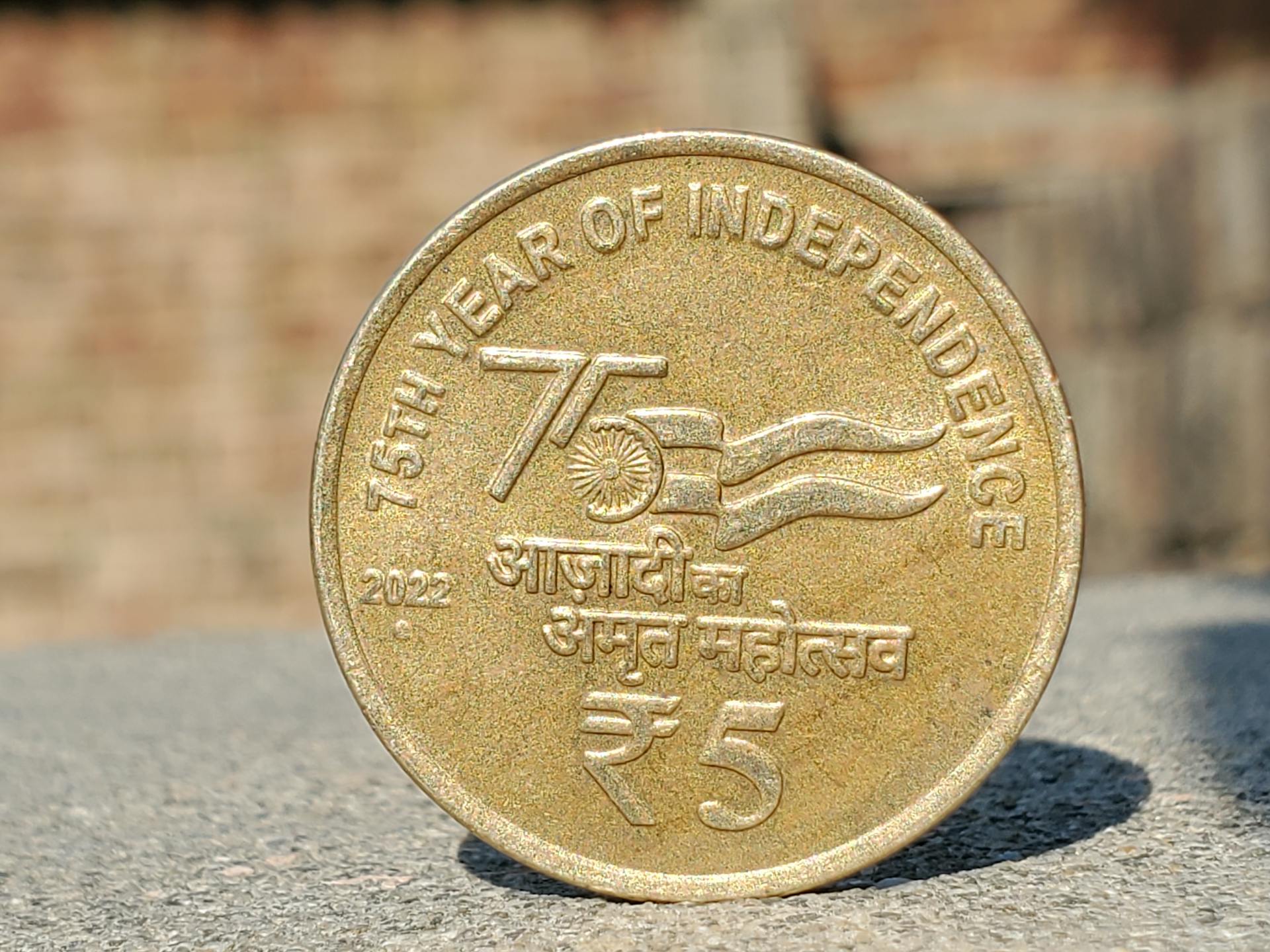
The Coinage Act of 1873 made significant changes to the types of coins that could be struck by the Mint Bureau. It omitted the standard silver dollar, which had unlimited legal tender, and instead allowed for a Trade dollar with a higher weight, but limited to $5 in legal tender.
The act also eliminated the two-cent piece, three-cent silver, and half dime coins. The coins that were authorized by the 1873 act included the cent, three-cent nickel, five-cent nickel, dime, quarter, half dollar, Trade dollar, gold dollar, quarter eagle, three-dollar piece, half eagle, eagle, and double eagle.
Depositors of silver bullion could receive their metal back in the form of bars or in Trade dollars, but depositing silver for striking into other coins was forbidden. The Mint was allowed to purchase silver bullion with silver coins at Philadelphia and the New York Assay Office for two years.
Take a look at this: Regulation Z Truth in Lending
Bureau of the Mint; Duties of Officers
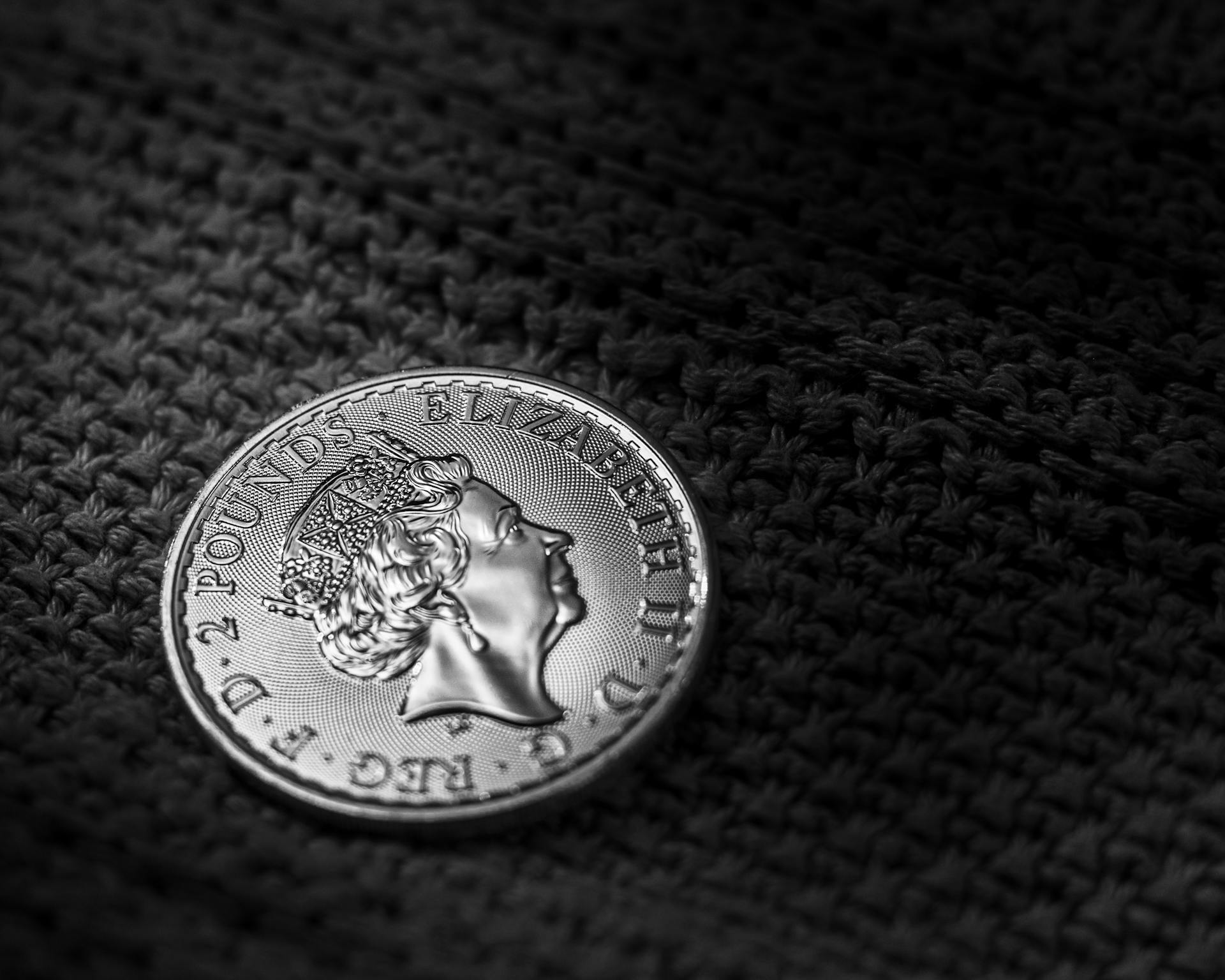
The Bureau of the Mint is responsible for overseeing the country's mints and assay offices, with the Director of the Mint playing a key role in this process.
The Director of the Mint is appointed by the President and confirmed by the Senate, serving a term of five years unless removed by the President.
Each mint has a superintendent in charge, with the Philadelphia Mint being under the immediate control of its superintendent, just like the other mints.
The Mint Director requires appointment by the President and confirmation by the Senate, and has been located at the Philadelphia Mint, with the other mints and assay offices governed by superintendents.
The Mint Director supervises the new Bureau of the Mint, which was formally made part of the Department of the Treasury by the 1873 act.
Each mint has officers such as the Assayer, the Melter and Refiner, and the Coiner, who are responsible for part of the coining process and must post a bond to indemnify the government against losses.
Discover more: Arizona Is Family Responsible for Medical Bills after Death
The officers of the mints, including the superintendent, must be appointed by the President and confirmed by the Senate, and are required to post a bond to indemnify the government against losses during their tenure of office.
The Engraver, responsible for preparing coinage dies and designs, is a unique position found only at the Philadelphia Mint, where they are also sometimes referred to as the Chief Engraver.
The Director of the Mint can hire outside artists to design coins, with the agreement of the Treasury Secretary, a provision that was inserted at the suggestion of former director Patterson.
Take a look at this: 1890 Silver Dollar O Mint Mark Value
Coins and Bullion Deposits
The 1873 act made significant changes to the coins authorized by the Mint Bureau. It omitted the standard silver dollar, which had been the only coin into which depositors of silver bullion could have their metal struck.
The act allowed for the Trade dollar, a coin of higher weight than the old silver dollar, but its legal tender was limited to $5. All gold coins, on the other hand, had unlimited legal tender.
For your interest: List of Presidential Dollar Coins
The act also eliminated the two-cent piece, three-cent silver, and half dime, which were still in circulation at the time. The half dime, in particular, was still being heavily struck by the San Francisco Mint for use in the Far West.
The coins authorized by the 1873 act included the cent, three-cent nickel, five-cent nickel, dime, quarter, half dollar, Trade dollar, gold dollar, quarter eagle, three-dollar piece, half eagle, eagle, and double eagle.
Coinage Chaos
The Coinage Act of 1873 was a game-changer for the US monetary system. It effectively ended the bimetallic standard and established a gold standard.
The US experienced significant inflation during and after the Civil War, with the government printing paper money, known as greenbacks, to finance the war and pay off its debt. This led to a significant increase in the money supply, causing inflation.
The discovery of gold in California in 1848 led to a significant increase in the supply of gold, causing a decrease in its value and an increase in the value of silver. This created tension between gold and silver advocates.
Expand your knowledge: Tax Implications for Someone in Italy to Inherit Money
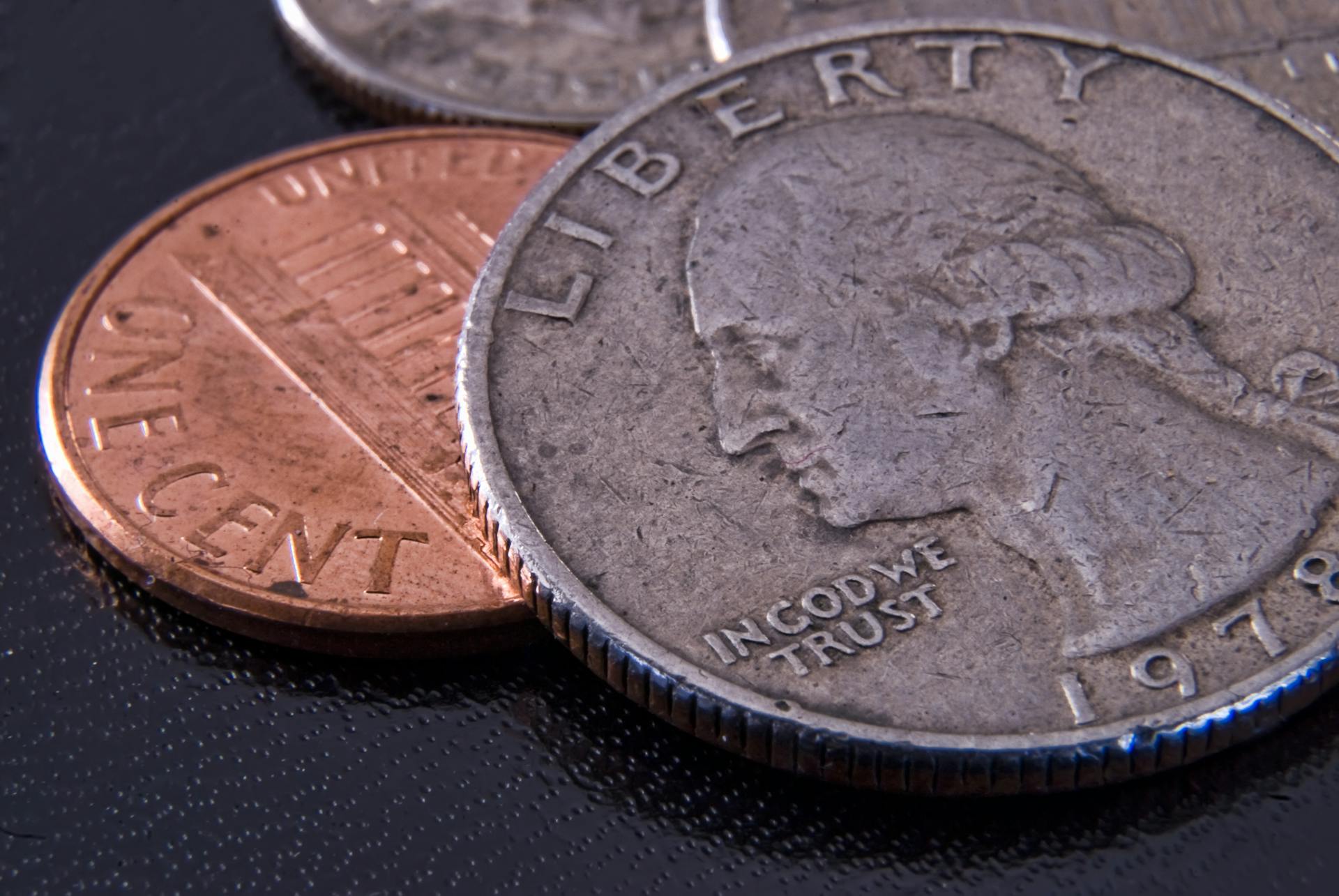
The Coinage Act of 1873 effectively demonetized silver, which had been used as currency since the founding of the US. This led to a decrease in the money supply and contributed to deflation.
Many European countries also adopted the gold standard, creating an international monetary system with fixed exchange rates between countries. This facilitated international trade.
The Coinage Act was not passed without controversy, with silver interests opposing the act and lobbying against it. The passage of the act was a victory for the gold interests.
A fresh viewpoint: Coinage Act of 1792
Testing and Enforcement
The Coinage Act of 1873 had a significant impact on testing and enforcement of coins. The annual Assay Commission, which met at the Philadelphia Mint, was tasked with testing gold and silver coins to ensure they met standards.
The Assay Commission consisted of government officials and members of the public, including the judge of the United States District Court for the Eastern District of Pennsylvania, the Comptroller of the Currency, and the assayer of the New York Assay Office. The president was allowed to appoint members of the public each year.
The commission followed a detailed procedure for taking samples from each delivery by the Coiner, sealing them in envelopes, and transmitting them to Philadelphia for testing.
Take a look at this: Are Presidential Dollar Coins Worth Anything
Testing and the Assay Commission
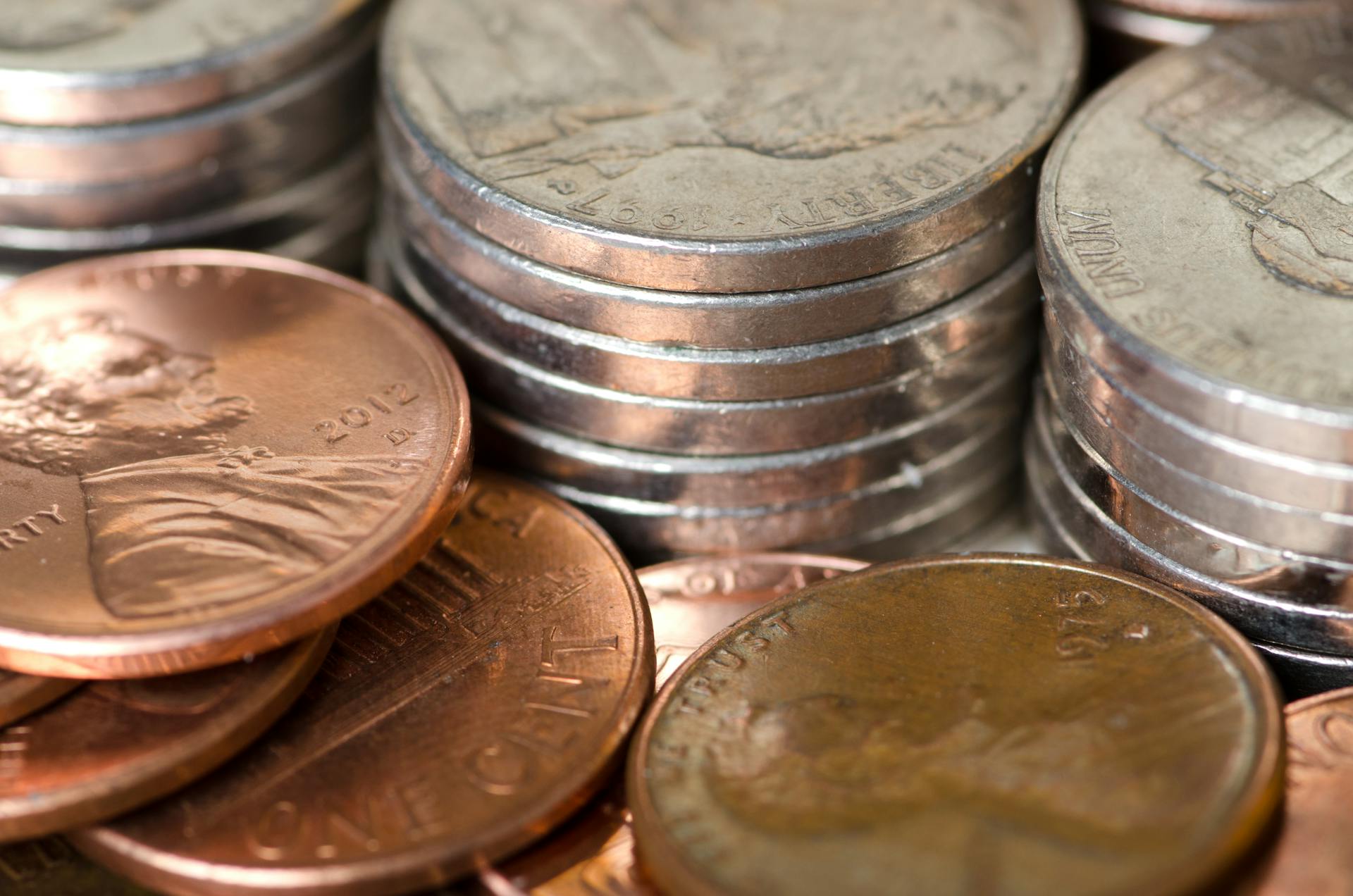
The Assay Commission was a key part of the testing process, meeting annually at the Philadelphia Mint from 1797 to 1980. It consisted of government officials and members of the public.
The Commission tested gold and silver coins to ensure they met standards. Its members played a crucial role in maintaining the integrity of the coinage system.
The 1837 act designated the judge of the United States District Court for the Eastern District of Pennsylvania, the United States Attorney, and the Collector of the Port of Philadelphia as members ex officio of the Assay Commission. However, the Coinage Act of 1873 made some changes to the membership.
The Commission also had a set procedure for taking samples from each delivery by the Coiner, sealing them in envelopes, and transmitting them to Philadelphia for testing. This process was detailed in the Coinage Act of 1873.
The Assay Commission played a vital role in ensuring the accuracy of the coinage process. Its annual meetings were an essential part of maintaining the trust in the mint's products.
Additional reading: Slave Insurance in the United States
Criminal Offenses and Miscellaneous Provisions
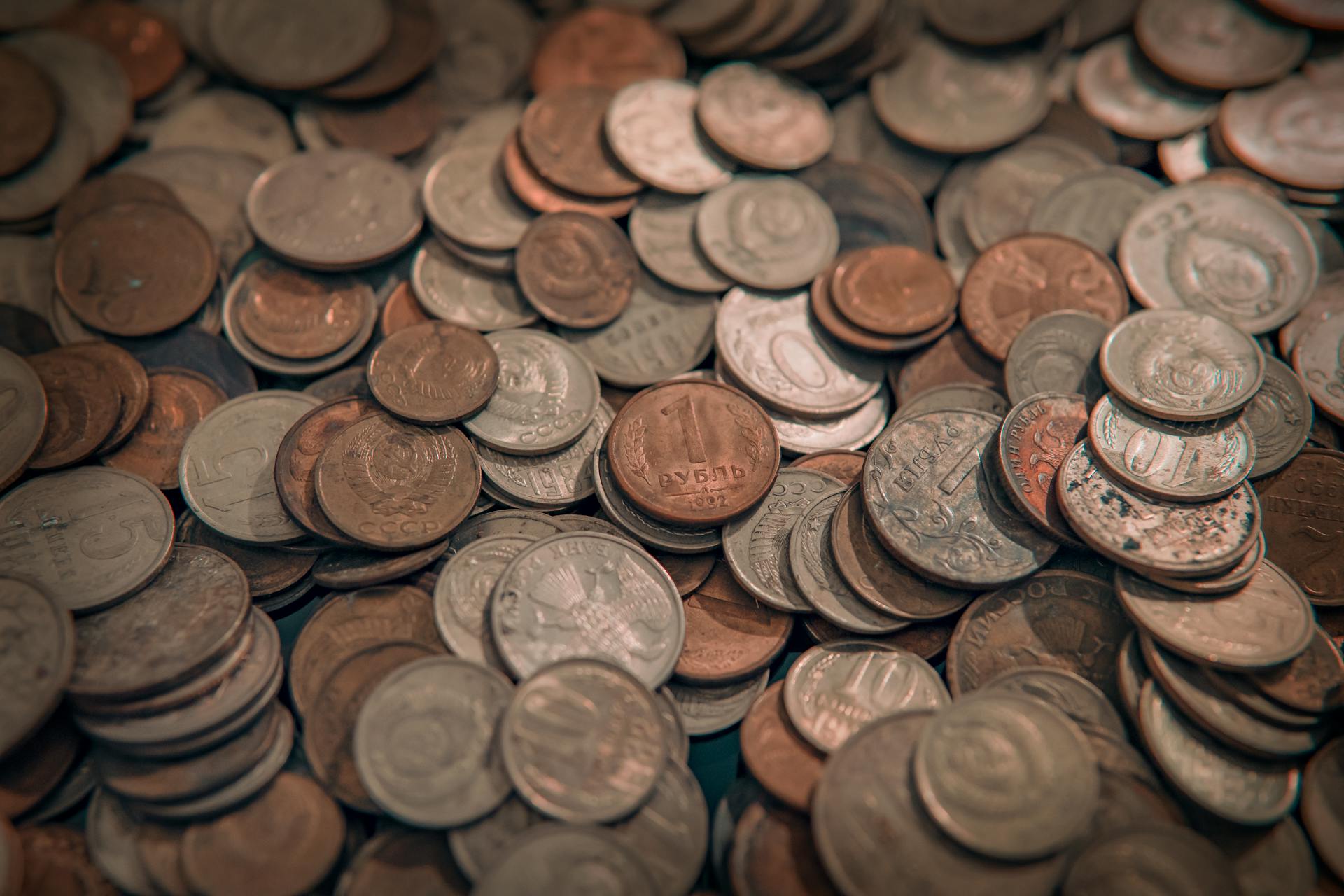
The Coinage Act of 1873 had some provisions that dealt with criminal offenses and miscellaneous matters. Section 51 required all obverse dies to be destroyed at the end of each year.
This was done to prevent the Mint from restruck rare early-dated coins to sell or exchange with collectors. The Mint had been doing this in the 1850s under Director Snowden.
Private medals were forbidden under Section 52, but medals of a national nature could be struck at Philadelphia. This was a change from the past, when the Mint had allowed private medals.
Section 53 was all about the profits from seigniorage. The law required the bureau's profits to be deposited in the Treasury and forbade the Mint from using that money to pay expenses or salaries. This was a change from the past, when the Mint had retained those earnings and spent them without oversight.
The Mint's profits from seigniorage were a big deal, and the law was clear about what should be done with them.
For your interest: Internal Revenue Code Section 1031
Impact and Legacy
The Coinage Act of 1873 had a profound impact on the American economy, politics, and culture. It effectively tied the value of American money to the value of gold, making currency more stable and reliable.
However, this decision also caused the price of silver to plummet, devastating silver miners and industries that relied on the metal. The supply of money in circulation decreased, contributing to deflation.
The act contributed to the rise of the Populist movement, which sought to empower farmers and working-class Americans against the influence of big business and wealthy elites. It also helped establish the Republican Party as the dominant political force in the United States for several decades.
The Coinage Act contributed to the perception of gold as a symbol of wealth and success, a perception that persists to this day.
Consider reading: 1 Oz Silver American Eagle Coin Value
6. Impact of the Silver Market
The silver market has had a profound impact on the global economy. The value of silver has increased by over 300% in the past decade, making it a highly sought-after investment opportunity.
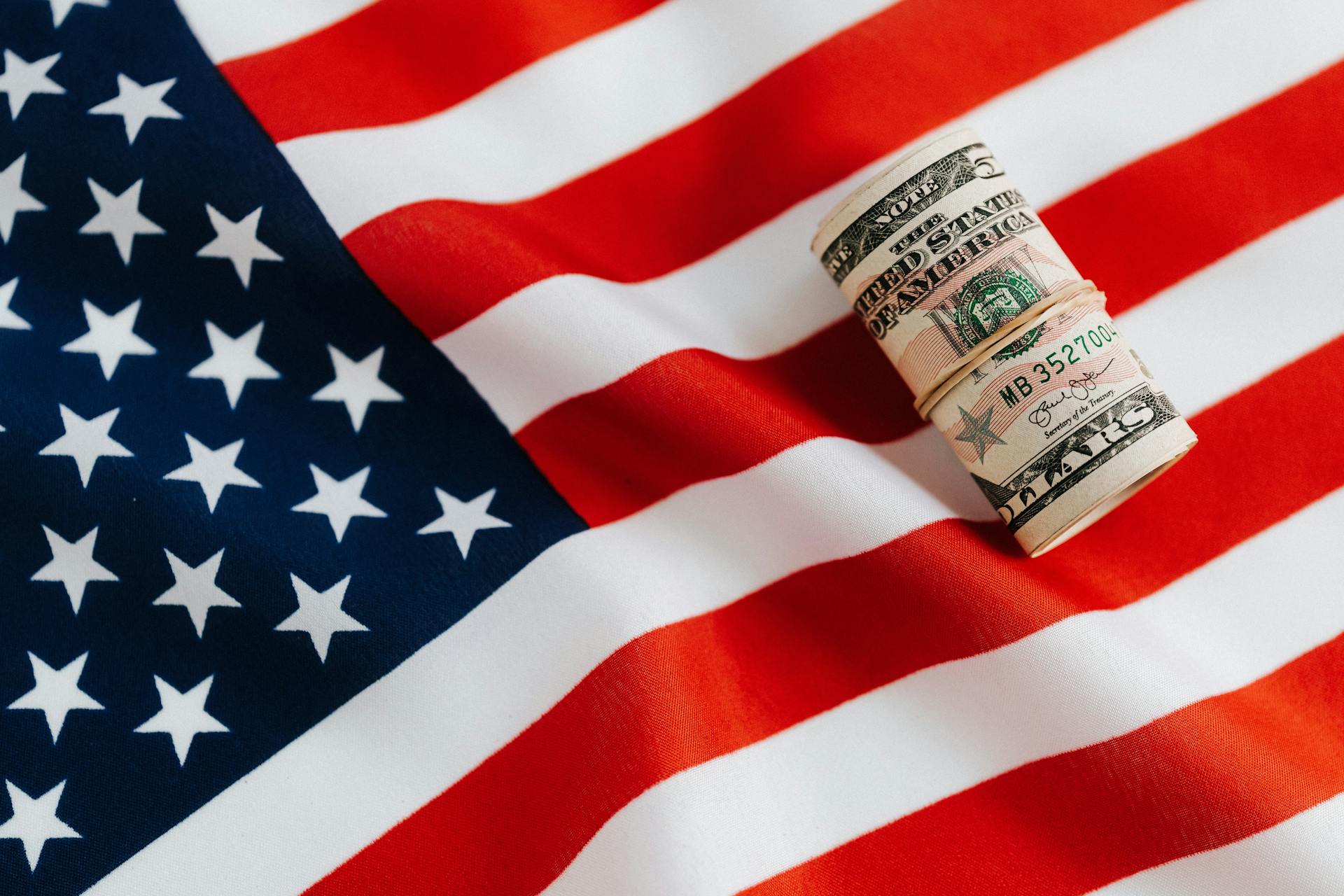
The rise of silver has been driven in part by its use in renewable energy technologies, such as solar panels and wind turbines. Silver's high electrical conductivity makes it an essential component in these applications.
The demand for silver in electronics is expected to continue growing, with the global electronics industry forecast to consume over 1.5 billion ounces of silver by 2025. This trend is likely to drive up prices and increase the market's overall value.
The silver market has also been influenced by its use in jewelry and coins. The demand for silver coins, such as the American Silver Eagle, has increased significantly in recent years, with over 40 million coins sold in 2020 alone.
A different take: Indian Gold Market Chart
7. Legacy
The Coinage Act of 1873 had a profound impact on the American economy, politics, and culture, leaving a lasting legacy that continues to shape the nation today.
By establishing gold as the sole standard for American currency, the act effectively tied the value of American money to the value of gold, making American currency more stable and reliable. This had a devastating effect on silver miners and other industries that relied on the metal, causing the price of silver to plummet.

The Coinage Act contributed to the rise of the Populist movement, which sought to empower farmers and working-class Americans against the influence of big business and wealthy elites. This movement was a response to the economic hardship caused by the act.
The act also helped to establish the Republican Party as the dominant political force in the United States, a position it held for several decades. This shift in power had far-reaching consequences for American politics.
Prior to the Coinage Act, silver was widely used in American coins and was seen as a symbol of the American frontier spirit. After the act, however, silver became associated with the interests of farmers and working-class Americans, and was seen as a symbol of political dissent.
The legacy of the Coinage Act continues to shape the American economy, politics, and culture to this day.
Expand your knowledge: Class Action Lawsuit Credit Card Fees
Context and Significance
The Coinage Act of 1873 was a pivotal piece of legislation that had a profound impact on the United States' monetary system. It effectively ended the bimetallic standard and established a gold standard.
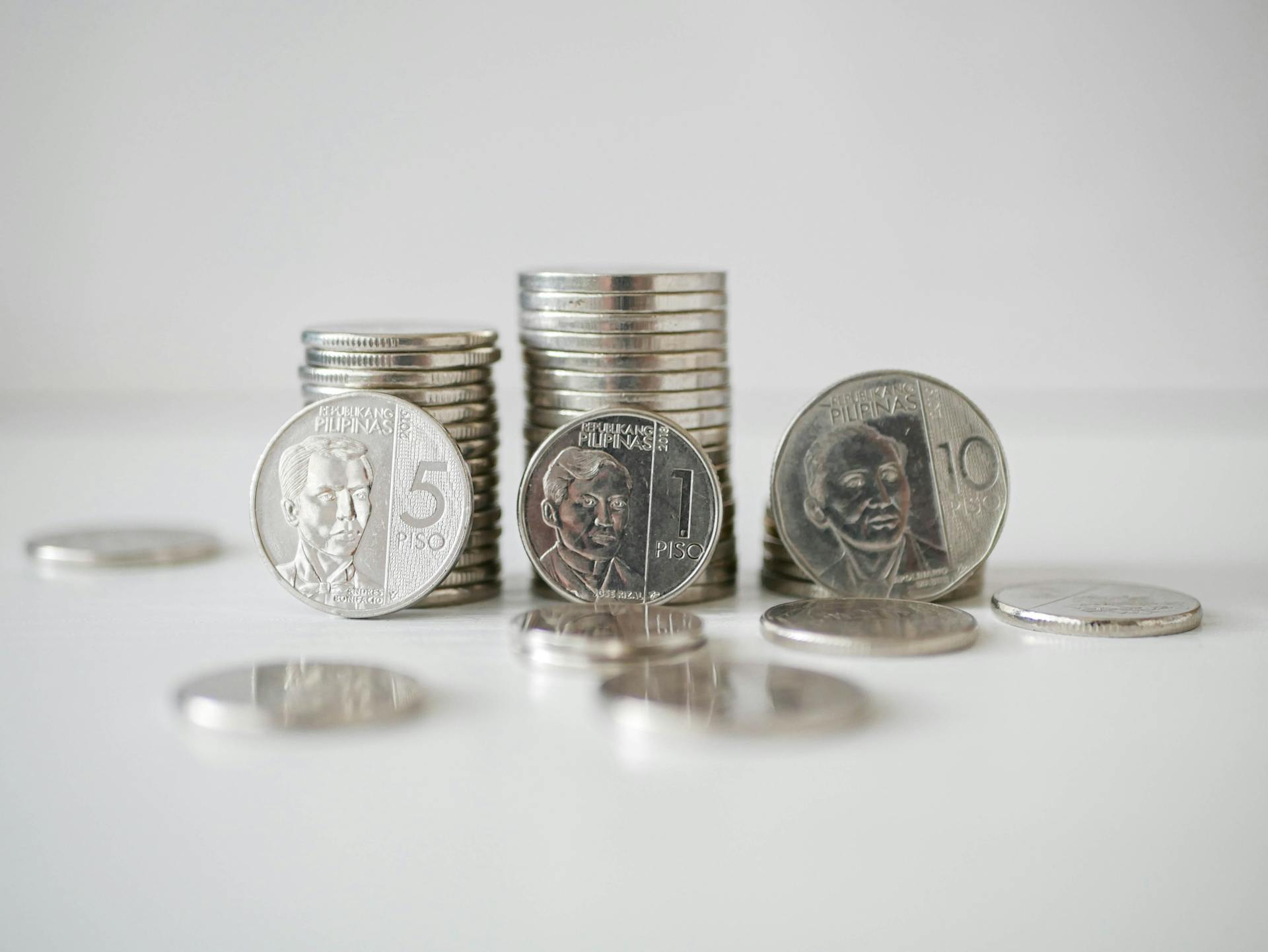
The act was passed in response to inflation, which had increased significantly during and after the Civil War. The government had printed paper money, known as greenbacks, to finance the war, leading to a surge in the money supply and inflation.
The discovery of gold in California in 1848 led to a significant increase in the supply of gold, causing a decrease in its value and an increase in the value of silver. This created tension between gold and silver advocates, with the latter arguing that the United States should use both metals as currency to maintain a stable money supply.
The Coinage Act was not passed without political pressure, with banking and business interests that supported the gold standard lobbying for its passage, while silver interests lobbied against it. The passage of the act was a victory for the gold interests.
The Coinage Act's impact on the economy is still felt today, as it established the gold standard that was used for decades, providing stability and predictability to the economy. Some economists argue that a return to the gold standard would help stabilize the economy and protect against inflation.
The act's demonetization of silver led to a decrease in the money supply and contributed to deflation, which had a significant impact on the social fabric of the United States. The resulting backlash gave rise to the Populist movement, which sought to give more power to ordinary people and limit the power of the wealthy.
The Coinage Act's legacy continues to influence the economy and government today, with the government still playing a significant role in controlling the money supply and setting interest rates.
For your interest: 1899 United States Five-dollar Silver Certificate
Sources
- https://en.wikipedia.org/wiki/Coinage_Act_of_1873
- https://www.herobullion.com/history-lesson-what-is-the-crime-of-1873/
- https://hexn.io/blog/what-does-crime-of-1873-mean-597
- https://coinweek.com/numismatic-history-crime-of-1873-creates-coinage-chaos/
- https://fastercapital.com/content/Coinage-Act--Understanding-the-Legislation-behind-the-Silver-Standard.html
Featured Images: pexels.com


